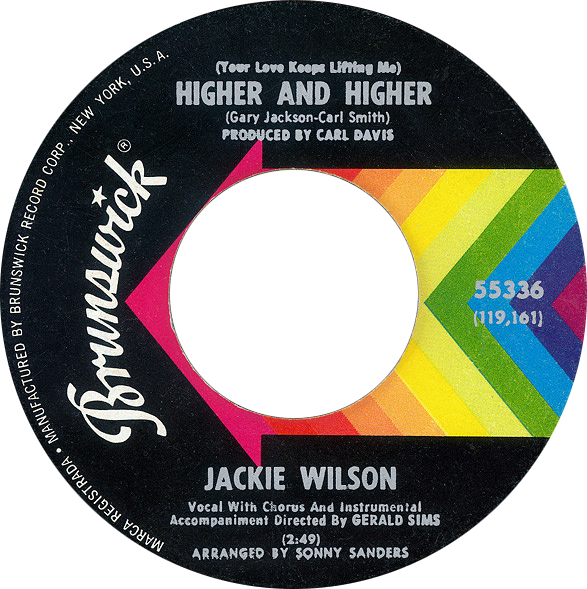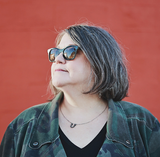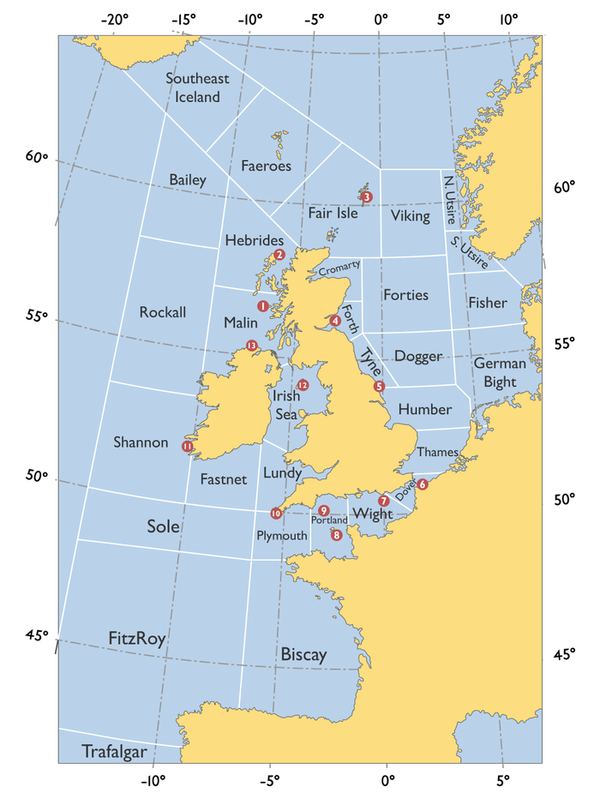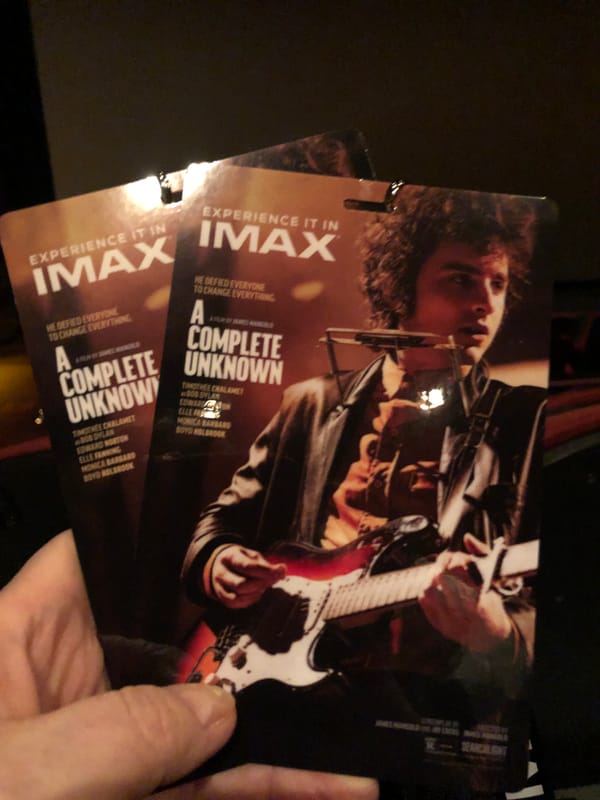Three Minute Record: Jackie Wilson, "(Your Love Keeps Lifting Me) Higher and Higher"
Mr. Excitement!

Welcome to Three Minute Record, the edition of this newsletter where we dive into Bruce Springsteen’s best cover versions. You can read more about the purpose of this exercise here and see other volumes here. This week we discuss Jackie Wilson's "(Your Love Keeps Lifting Me) Higher and Higher" and the 1977 and 2009 tours.
I will remember this moment for the rest of my life: sitting side stage at the Philadelphia Spectrum (OBM) on October 20, 2009, and watching Bruce Springsteen pull a bunch of signs out of the audience, one reading Higher and Higher. Even as he was doing this, I did not have my hopes up. Bruce always pulled a whole lot of signs out of the crowd on this tour and pulling the sign didn’t guarantee a performance of a song, or it could mean that it would show up a couple of nights later after he’d had a chance to work it out.
Also, this wasn’t the first time someone had brought a sign for “Higher and Higher” to a show. But he had opened the evening with “The Price You Pay” from The River for the first time since 1981. It was also the last time Bruce Springsteen and the E Street band would perform at the Spectrum - it would meet the actual wrecking ball just a week and a half later. So maybe there was a chance this time.
And then, there it was, Jackie Wilson’s beautiful and ecstatic hit, last performed by the E Street Band in 1977 at the Boston Music Hall, the show that enshrined “Higher and Higher” into E Street legend, that would cause it to be the kind of unicorn request that someone would put on a sign and hope for at a show.
thanks to the infamous Magikrat
The thing is, though, you can’t do “Higher and Higher” without a horn section, and it was only towards the end of the 2009 tour that Curt Ramm (now the second-most veteran member of the E Street Horns after Ed Manion) came on board so that Bruce could reliably execute a full-album Born to Run show. Trumpet and a saxophone isn’t a horn section per se, but it was more than we’d had to work with since Tunnel of Love. So the sign-writer had some thought put into it. (At least that’s how I viewed it.)
To be honest, I have always felt that it’s kind of a bullshit move to bring a sign for a cover version to any band’s show -- you’re basically saying, “Hey, play someone else’s song!” -- but “Higher and Higher” is different in this context. It is a legendary song known to the fandom for its place in a legendary four run of night shows that resulted in a collection of legendary bootlegs. I am talking about the shows at the end of the 1977 tour -- the so-called “Lawsuit Tour” -- at the Boston Music Hall.
The band were on tour in 1977 not to promote a new record but because Bruce was embroiled in a lawsuit against his then-manager, Mike Appel, and he was forbidden to record any new music with any producer that wasn’t Mike Appel. The tour was a way to keep the E Street Band employed and paid and not poached by other bands. And also, they wanted to keep E Street alive in people’s minds as a going concern; there had already been plenty of WHERE ARE THEY NOW? columns with Bruce Springsteen’s photo in it because he hadn’t been able to put out anything new following Born To Run in 1975 and its barrage of press, including the dual covers of Time and Newsweek. But mostly it was about making sure people could pay their bills.
While there’s a lot of fire and heat in those 76-77 shows – the darkest versions ever of “It’s My Life” are from that era – while Bruce’s musical career was in limbo, as things started to improve with the legal negotiations in the spring, the vibe onstage got a little bit lighter energetically. What I have always heard in the Boston Music Hall shows was joy and relief; 3-25-77 is a non-stop party from end to end. There had been discussion about prolonging the tour, maybe taking it to Europe, but once they knew they were making progress he was going to get into the studio the second he could (and did). Also, four nights in Boston at the Music Hall was roughly equal to one night at an average-size arena (the Music Hall’s capacity was 3500) but a nicer experience for everyone, audience and band.
But when these shows were booked, things were still a little dicey -- remember, some members of the E Street Band literally filed for unemployment benefits in this time period -- and being able to play four nights in a friendly place like Boston at a cozy theater was something to look forward to. Boston, like Philadelphia, had also been a Springsteen stronghold before he was a household name; it was a great rock and roll town in the 60s and 70s. That’s why the band could play four nights in a row at the Music Hall. Gratefully, there was a taper there, capturing all four nights, which is how these shows built the reputation that they rightfully deserved.
The 1977 tour was also infamous because of the presence of the Miami Horns, who came on board in the summer of 1976 once Bruce realized he wasn’t going back into the studio and needed to stay on the road. E Street played six shows at the venue we now know as the Basie, but at the time was the Monmouth Arts Center in Red Bank, NJ. Southside Johnny was sick and couldn’t tour, so the manager of the Asbury Jukes kindly arranged for the horn section to join the E Street Band at these shows.
That’s a joke, of course, because, of course, the manager of the Jukes was none other than Miami Steve Van Zandt. Once Southside was ready to get back on the road again, a decision was made to continue the tour with a horn section (because it absolutely makes sense that when you’re on the road trying to make money that you expand the lineup of people you have to pay.) I’m not complaining about this, it is just something that has never made any sense to me, when you’re already paying six dudes to add another four to have to split the take with as well as the additional expenses of carrying four additional musicians. I am just asking questions!
I don’t know why the 1977 Boston Music Hall shows became a thing that people who traded tapes knew about. It’s not like Crystal Cat put out a 12-CD set called “Boston Nights” that everyone handed around. I know I went looking for the shows because I wanted to hear “Action In The Streets” and I saw it on someone’s tape list in the mid-80s (and thoughtful traders would include setlists as part of their lists so you were making an informed selection) so I sent someone a bunch of live R.E.M. shows in trade for Springsteen shows and one of those was a two-fer that had 3-24 and 3-25-77. (It was the first time I heard E Street do “Little Latin Lupe Lu” and “You Can’t Sit Down” as well.) Those were the last two shows of the run, and the 24th was the first E Street Band performance of the Jackie Wilson classic, “(Your Love Keeps Lifting Me) Higher and Higher.”
Bruce introduces the song in Boston as follows: “I want to thank - c'mon Professor! - all the people in Boston who come down to the show these past four nights. Through the hard times, through the good times, we appreciate the support. All the people that came down and saw us when we wee playing at Oliver's, at Charlie's Place, at Joe's Place, I wanna thank you all very much, we sincerely appreciate it. I'd like to dedicate this song to guys that are friends of mine and have worked their ass off for me every night for a very little pay, to the crew, the light people, and everybody to say we love you very much.”
(If you’ve not heard these shows, I encourage you to go look for them within the fan community, and if this is beyond your capabilities, luckily there are two shows from the start of the tour that are available through the Springsteen’s own official archive, Albany and Rochester, 2/7/77 and 2/8/77 respectively, recorded six weeks before these shows. There’s no “Higher and Higher” but the Miami Horns are there (and “Action in the Streets,” always one of my favorite early outtakes. You will get the general idea. But there are excellent recordings of the Boston Music Hall shows and it would be great if nugs.net and Bruce Inc. could find a way to release – at least for streaming only – some of the more infamous audience recordings from various tours. None of us are getting younger!)

Jackie Wilson was born in Detroit, the son of parents who had come north in the Great Migration. He got his start singing gospel before taking Clyde McPhatter’s place in Billy Ward’s Dominoes, who you may know from their hit “Sixty Minute Man.” The Dominoes are absolutely what brought Wilson to a wider audience – none other than Elvis Presley caught Wilson fronting the Dominoes in Las Vegas, he’d talk about it the night he hung out with the Million Dollar Quartet. Wilson left the Dominoes in the late 50s, and his first solo single, “Reet Petite,” was written by none other than Berry Gordy, Jr.
If you go on a tour of Motown Records in Detroit, you’ll hear the tour guide explain that it was the result of the miniscule royalty check he received from that unquestionably hit record that made him decide [encouraged by his good friend Smokey Robinson] to start his own record company. Gordy wrote some great songs for Wilson besides “Reet Petite” - he also penned “To Be Loved” and “Lonely Teardrops.”
Jackie Wilson possessed not just a gorgeous voice that could sing a wide range, but he was also a very physical performer and earned the moniker “Mr. Excitement!” He generated the same kind of screaming girls that Elvis did, and that you’d later see during Beatlemania. He was a snappy dresser and he had an absolutely magnetic stage presence. He knew how to work a stage and an audience and had a voice that sounded and felt like warm honey. It was so smooth. Everything about him was smooth. Watch him work and pick out how many elements of his stage presence musicians you love have tried to borrow.
Jackie Wilson was a frequent performer in the various oldies package shows, like the Dick Clark Cavalcade of Stars (and similar), so it’s not out of the realm of possibility that Bruce got to see him perform in one of those outings at some point in New Jersey. We know he used to go see folks like Sam & Dave and Wilson Pickett and study their performances and how they worked because he’s told us he used to do exactly that.
He specifically paid tribute to Wilson on the Tunnel of Love tour in 1988, adding “Lonely Teardrops” to the set at the end of the run (although soundcheck reports he’d been working on it throughout the TOL tour) and he’d finally break it out the last two nights at MSG, which you can hear on the 5-23-88 Live Archive recording. In my essay for Backstreets about the archive release, I said:
There’s a reason it took until this run of shows for Bruce to put “Lonely Teardrops” into the set as the closing number no less, instead of just playing around with it at soundchecks. You don’t toy around with Jackie Wilson, and you don’t try to approximate the delivery of a man known in his day as “Mr. Excitement” unless you plan to come correct. Bruce does, nailing Wilson’s lilt, warmth, and utter hot-buttered-soul smoothness.
Perhaps my favorite Jackie Wilson reference was at the 2003 Christmas shows at Beautiful Convention Hall in Asbury Park, where Bruce came out wearing a suit and without a guitar to perform “So Young and In Love.” As he worked his way through the song, working the stage from side to side in a way that is absolutely based on everyone he studied back in the 60s and 70s, he takes his jacket off and casually slings it over his shoulder. And if you weren’t 100% sure, he declaimed,”Thank you Jackie Wilson!” at the end of the song. Nowadays, you can see Bruce paying tribute during his cover of “Nightshift,” where Wilson gets the second verse of the song, and he busts a move alongside Curtis King out on the center platform.
Why “Higher and Higher”? I am offering a theory: It was a hit! It was a great song by a musician he admired and whose performance style he borrowed liberally from. Why did it come out in Boston 1977? Because he had a horn section out with him, because he wanted to do something special to thank the city for selling out four shows and for their long-time support, and because it was the end of this particular era, these shows, and he knew he’d have his career back under his control in a little while. Why did it come out in Philly in 2009? It was the last night he’d be playing the Spectrum (he could have had the honors of the very last show but was already committed to the Rock and Roll Hall of Fame 25th Anniversary shows at the Garden), he wanted to say thank you to Philadelphia, and he had a horn section, or at least enough of one to make it work. There was the right person with the right sign at the right time.
This is what I wrote about the moment when it happened:
He tries to find the riff – he’s close but he doesn't have the key right. Charlie has it, plays the refrain. He plays it once – just once – and Bruce has it dialed in. Calls to the horns – and of course, Clarence goes first, even though I bet any amount of money that Curt Ramm knew it immediately – and then the Professor for good measure. (I am sure some of this was to give Kevin time to get the lyrics on the prompter.) And then – BOOM. Holy mother of god, they are doing it. They are playing it. They are going to play “Higher and Higher.” At the Spectrum. The thing about doing this in Philly is that you’re going to get enough of a OH MY FUCKING GOD reaction from the crowd to give the band energy to keep going. It’s like trying to play “Thundercrack” anywhere outside of the East Coast – maybe Detroit, once upon a time Cleveland (but not now), Boston, maybe Chicago – but anywhere else it’s going to drop dead in the water because no one in the crowd knows what to do.
And he’s loving it. That’s just it, it wasn’t just that it was fun or okay or goofy, it was Bruce loving every single second of the song. It was Garry W. Tallent swinging back there on the bass. It was Nils Lofgren swaying back and forth with gusto. It was the backup singers FINALLY HAVING SOMETHING WORTHWHILE TO ACTUALLY DO, where their presence was vital to the performance of the song and not superfluous. It was Stevie having to actually pay attention to what’s going on. It was singing and dancing and waving your arms in the air and it lasted for almost ten minutes. You got religion. You stood there for 10 minutes thinking, I am closing down the Spectrum singing “Higher and Higher” with the E Street Band. This is the kind of moment you dreamed about when you first started collecting Springsteen bootlegs.
[You can read my full piece on 10-20-2009 as well]
Despite its victory lap at the end of the 2009 tour, “Higher and Higher” is not a song that has been played often. As of this writing, it has made 19 appearances (Brucebase says 20 because they count the time Bruce showed up at a Pretenders show in California and he joined them for their version of this song in the encore. [Did you know that Jackie Wilson was Chrissie Hynde’s first kiss?]. He played it the last two nights of the ‘77 tour at the Music Hall, E Street joined the Jukes for their New Year’s Eve show at the Capitol Theatre at the end of that year and they all played it together, and then we did not see this song again until Bruce pulled that sign out of the audience at the Spectrum in October 2009. Then it became a frequent flier, growing and expanding the way E Street does when they really dig into something, until that last show of the ‘09 tour in Buffalo. After that, he pulled it out at Light of Day in ‘15 and at one of the private school benefits for his kids in ‘10, but the last proper outing of “Higher and Higher” was in Helsinki in 2012, that (at the time) record-breaking 4 hour show at the end of the European leg of the 2012 tour, similar special and exceptional circumstances as its previous appearances.
Playing “Higher and Higher” requires devotion, it requires a commitment, you have to feel it. If we see it again, I believe it would only be in a circumstance that deserves it. Under those requirements, that may mean it remains an E Street Band legend and a memory for anyone lucky enough to have witnessed it in 1977 or 2009.
p.s. In tribute to Jackie Wilson, 2008-2019
If you'd like commenting privileges, become a paid subscriber!


![remnants: Patti Smith and Her Band, Webster Hall, 29 & 30 December 2013 [+ bonus downloads]](/content/images/size/w600/2024/12/Screen-Shot-2024-12-29-at-2.13.07-PM.png)

